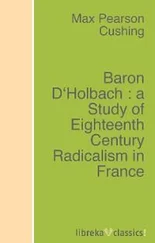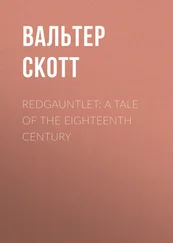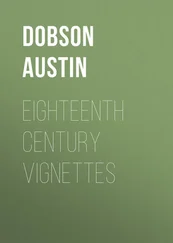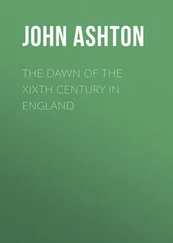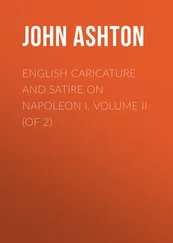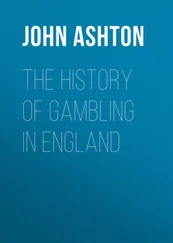John Ashton - Eighteenth Century Waifs
Здесь есть возможность читать онлайн «John Ashton - Eighteenth Century Waifs» — ознакомительный отрывок электронной книги совершенно бесплатно, а после прочтения отрывка купить полную версию. В некоторых случаях можно слушать аудио, скачать через торрент в формате fb2 и присутствует краткое содержание. Жанр: foreign_antique, foreign_prose, на английском языке. Описание произведения, (предисловие) а так же отзывы посетителей доступны на портале библиотеки ЛибКат.
- Название:Eighteenth Century Waifs
- Автор:
- Жанр:
- Год:неизвестен
- ISBN:нет данных
- Рейтинг книги:4 / 5. Голосов: 1
-
Избранное:Добавить в избранное
- Отзывы:
-
Ваша оценка:
- 80
- 1
- 2
- 3
- 4
- 5
Eighteenth Century Waifs: краткое содержание, описание и аннотация
Предлагаем к чтению аннотацию, описание, краткое содержание или предисловие (зависит от того, что написал сам автор книги «Eighteenth Century Waifs»). Если вы не нашли необходимую информацию о книге — напишите в комментариях, мы постараемся отыскать её.
Eighteenth Century Waifs — читать онлайн ознакомительный отрывок
Ниже представлен текст книги, разбитый по страницам. Система сохранения места последней прочитанной страницы, позволяет с удобством читать онлайн бесплатно книгу «Eighteenth Century Waifs», без необходимости каждый раз заново искать на чём Вы остановились. Поставьте закладку, и сможете в любой момент перейти на страницу, на которой закончили чтение.
Интервал:
Закладка:
‘Good friend, for Jesus’ sake, forbear
To dig the dust inclosed here:
Blest be the man who spares these stones,
And cursed be he who moves my bones.’
But Milton laid no such interdict upon his poor dead body – and it was not very long after his burial, which took place in 1674, that the stone which covered it, and indicated his resting-place, was removed, as Aubrey tells us in his ‘Lives’ (vol. iii, p. 450). ‘His stone is now removed. About two years since (1681) the two steppes to the communion-table were raysed, Ighesse, Jo. Speed, 17and he lie together.’ And so it came to pass that, in the church of St. Giles’, Cripplegate, where he was buried, there was no memorial of the place where he was laid, nor, indeed, anything to mark the fact of his burial in that church until, in 1793, Samuel Whitbread set up a fine marble bust of the poet, by Bacon, with an inscription giving the dates of his birth and death, and recording the fact that his father was also interred there.
It is probable that Mr. Whitbread was moved thereto by the alleged desecration of Milton’s tomb in 1790, of which there is a good account written by Philip Neve, of Furnival’s Inn, which is entitled, ‘A Narrative of the Disinterment of Milton’s coffin, in the Parish-Church of St. Giles, Cripplegate, on Wednesday, August 4th, 1790; and the Treatment of the Corpse during that and the following day.’
As this narrative is not long, I propose to give it in its entirety, because to condense it would be to spoil it, and, by giving it in extenso , the reader will be better able to judge whether it was really Milton’s body which was exhumed.
Having read in the Public Advertiser , on Saturday, the 7th of August, 1790, that Milton’s coffin had been dug up in the parish church of St. Giles, Cripplegate, and was there to be seen, I went immediately to the church, and found the latter part of the information to be untrue; but, from conversations on that day, on Monday, the 9th, and on Tuesday, the 10th of August, with Mr. Thomas Strong , Solicitor and F.A.S., Red Cross Street, Vestry-Clerk ; Mr. John Cole , Barbican, Silversmith, Churchwarden ; Mr. John Laming , Barbican, Pawnbroker ; and Mr. Fountain , Beech Lane, Publican, Overseers ; Mr. Taylor , of Stanton, Derbyshire, Surgeon ; a friend of Mr. Laming , and a visitor in his house; Mr. William Ascough , Coffin-maker, Fore Street, Parish Clerk ; Benjamin Holmes and Thomas Hawkesworth , journeymen to Mr. Ascough; Mrs. Hoppey , Fore Street, Sexton ; Mr. Ellis , No. 9, Lamb’s Chapel, comedian of the Royalty-theatre; and John Poole (son of Rowland Poole), Watch-spring maker, Jacob’s Passage, Barbican, the following facts are established:
It being in the contemplation of some persons to bestow a considerable sum of money in erecting a monument, in the parish church of St. Giles , Cripplegate, to the memory of Milton , and the particular spot of his interment in that church having for many years past been ascertained only by tradition, several of the principal parishioners have, at their meetings, frequently expressed a wish that his coffin should be dug for, that incontestable evidence of its exact situation might be established, before the said monument should be erected. The entry, among the burials, in the register-book, 12th of November, 1674, is ‘ John Milton , Gentleman, consumption, chancell .’ The church of St. Giles, Cripplegate, was built in 1030, was burnt down (except the steeple) and rebuilt in 1545; was repaired in 1682; and again in 1710. In the repair of 1782, an alteration took place in the disposition of the inside of the church; the pulpit was removed from the second pillar, against which it stood, north of the chancel, to the south side of the present chancel, which was then formed, and pews were built over the old chancel. The tradition has always been that Milton was buried in the chancel, under the clerk’s desk; but the circumstance of the alteration in the church, not having, of late years, been attended to, the clerk, sexton, and other officers of the parish have misguided inquirers, by showing the spot under the clerk’s desk, in the present chancel, as the place of Milton’s interment. I have twice, at different periods, been shown that spot as the place where Milton lay. Even Mr. Baskerville , who died a few years ago, and who had requested, in his will, to be buried by Milton , was deposited in the above-mentioned spot of the present chancel, in pious intention of compliance with his request. The church is now, August, 1790, under a general repair, by contract, for £1,350, and Mr. Strong , Mr. Cole , and other parishioners, having very prudently judged that the search would be made with much less inconvenience to the parish at this time, when the church is under repair, than at any period after the said repair should be completed, Mr. Cole , in the last days of July, ordered the workmen to dig in search of the coffin. Mr. Ascough , his father, and grandfather, have been parish clerks of St. Giles for upwards of ninety years past. His grandfather, who died in February, 1759-60, aged eighty-four, used often to say that Milton had been buried under the clerk’s desk in the chancel. John Poole , aged seventy, used to hear his father talk of Milton’s person, from those who had seen him; and also, that he lay under the common-councilmen’s pew. The common-councilmen’s pew is built over that very part of the old chancel, where the former clerk’s desk stood. These traditions in the parish reported to Mr. Strong and Mr. Cole readily directed them to dig from the present chancel, northwards, towards the pillar, against which the former pulpit and desk had stood. On Tuesday afternoon, August 3rd, notice was brought to Messrs. Strong and Cole that the coffin was discovered. They went immediately to the church, and, by help of a candle, proceeded under the common-councilmen’s pew to the place where the coffin lay. It was in a chalky soil, and directly over a wooden coffin, supposed to be that of Milton’s father; tradition having always reported that Milton was buried next to his father. The registry of the father of Milton , among the burials, in the parish-book, is ‘ John Melton , Gentleman, 15th of March, 1646-7.’ In digging through the whole space from the present chancel, where the ground was opened, to the situation of the former clerk’s desk, there was not found any other coffin, which could raise the smallest doubt of this being Milton’s . The two oldest found in the ground had inscriptions, which Mr. Strong copied; they were of as late dates as 1727 and 1739. When he and Mr. Cole had examined the coffin, they ordered water and a brush to be brought, that they might wash it, in search of an inscription, or initials, or date; but, upon its being carefully cleansed, none was found.
The following particulars were given me in writing by Mr. Strong , and they contain the admeasurement of the coffin, as taken by him, with a rule. ‘A leaden coffin, found under the common-councilmen’s pew, on the north side of the chancel, nearly under the place where the old pulpit and clerk’s desk stood. The coffin appeared to be old, much corroded, and without any inscription or plate upon it. It was, in length, five feet ten inches, and in width, at the broadest part, over the shoulders, one foot four inches.’ Conjecture naturally pointed out, both to Mr. Strong and Mr. Cole , that, by moving the leaden coffin, there would be a great chance of finding some inscription on the wooden one underneath; but, with a just and laudable piety, they disdained to disturb the sacred ashes, after a requiem of one hundred and sixteen years; and having satisfied their curiosity, and ascertained the fact, which was the subject of it, Mr. Cole ordered the ground to be closed. This was on the afternoon of Tuesday, August the 3rd; and, when I waited on Mr. Strong , on Saturday morning, the 7th, he informed me that the coffin had been found on the Tuesday, had been examined, washed, and measured by him and Mr. Cole ; but that the ground had been immediately closed, when they left the church; – not doubting that Mr. Cole’s order had been punctually obeyed. But the direct contrary appears to have been the fact.
Читать дальшеИнтервал:
Закладка:
Похожие книги на «Eighteenth Century Waifs»
Представляем Вашему вниманию похожие книги на «Eighteenth Century Waifs» списком для выбора. Мы отобрали схожую по названию и смыслу литературу в надежде предоставить читателям больше вариантов отыскать новые, интересные, ещё непрочитанные произведения.
Обсуждение, отзывы о книге «Eighteenth Century Waifs» и просто собственные мнения читателей. Оставьте ваши комментарии, напишите, что Вы думаете о произведении, его смысле или главных героях. Укажите что конкретно понравилось, а что нет, и почему Вы так считаете.

